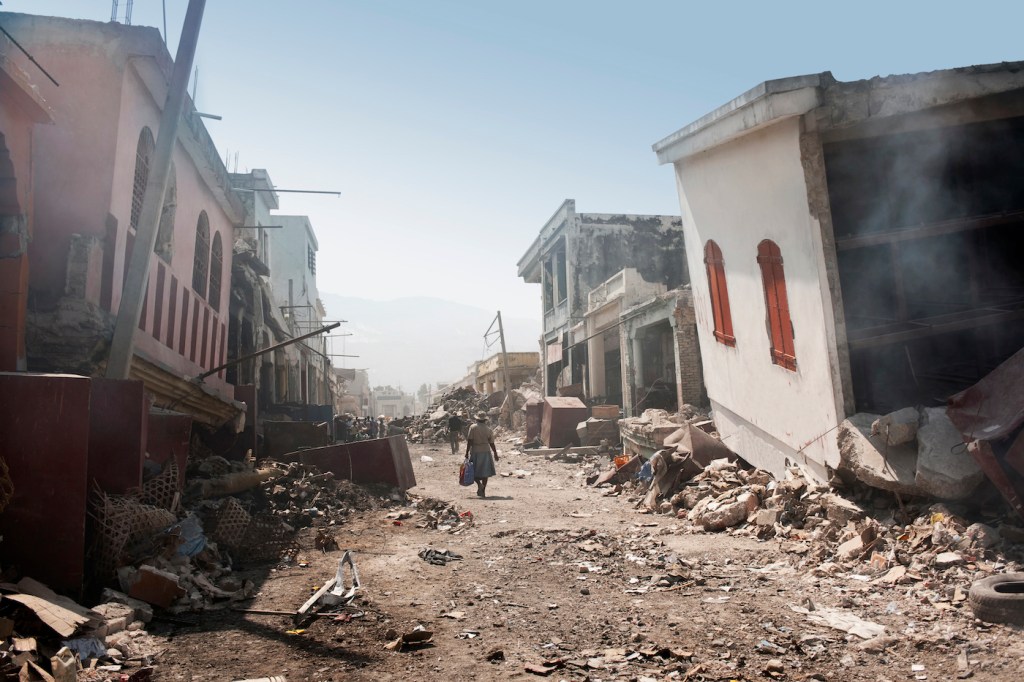Professor builds tool to help cities bounce back faster after disaster

When an earthquake shakes a city, roads often become littered with piles of debris. These blockages make rescue and relief operations tricky. Now, Ozlem Ergun, professor of mechanical and industrial engineering at Northeastern, has developed a new decision support tool to help cities bounce back more quickly after earthquakes or other disasters. In simulated models, Ergun found that the tool produced a plan that led to faster reopening of roads than current strategies could achieve.
Local, state, and federal emergency management agencies have guidelines for restoring service when road systems are disrupted, but Ergun said the plans are static—they don’t take into account location of medical facilities, amount of vegetation, and other unique characteristics that might affect recovery.
With this in mind, Ergun created a mathematical framework— described in a paper published Wednesday in the journal PLOS ONE—that can analyze data inputted after a disaster and provide immediate recommendations for prioritizing relief efforts. By inputting which roads were affected by debris and how much debris had fallen, the tool provides a schedule of which roads to clear in what order.
Working with doctoral student Aybike Ulusan, Ergun showed how the model works by examining the problem of clearing roads after an earthquake. The new tool takes a network science approach, analyzing real-time, situational data, such as the type of disaster, the amount of debris, and the pattern of road closures in a given city.
This is important, because it’s difficult to predict how a city’s infrastructure will be affected after a natural disaster. To demonstrate this, Ergun compared two simulated case studies—one in Boston and one in New York.
“These are two very different cities, because they have different road networks and different structures,” Ergun said. “Boston is all spaghetti roads everywhere, and Manhattan is very structured.”
When she simulated an event in which debris was scattered uniformly on roads throughout both cities, New York’s grid-like system was more resilient—recovery efforts were completed faster and more efficiently.
But in a more realistic scenario, that wasn’t the case. When taking into account other factors—including uneven distribution of debris, vegetation, number of large buildings, location of hospitals, and building codes—Ergun found that one transportation network was not more resilient than the other. This shows that natural disasters have an unpredictable impact on road networks, and clearing debris efficiently requires a plan informed by as much relevant data as possible.
“The tool that we’ve developed can take all of these inputs and then, because it’s based on these simple network science ideas, it can give you solutions or recommendations very quickly,” Ergun said.
According to her, entities responsible for disaster relief and recovery, such as the Federal Emergency Management Agency and the U.S. Army Corps of Engineers, can use this tool to improve their current operations. Entities responsible for disaster relief and recovery, such as FEMA and the U.S. Army Corps of Engineers, can use this tool to improve their current operations. Currently, the tool is a series of algorithms, and she envisions it being used to develop platforms that emergency management agencies could use to plug in road-closure data and be quickly given recommendations for prioritizing relief efforts.
“What we’re saying is, don’t just make plans by looking at pre-event guidelines,” Ergun said. “The guidelines should also include these tools and assessment mechanisms that can be populated by after-event data. This will make the process more efficient and quicker.”





